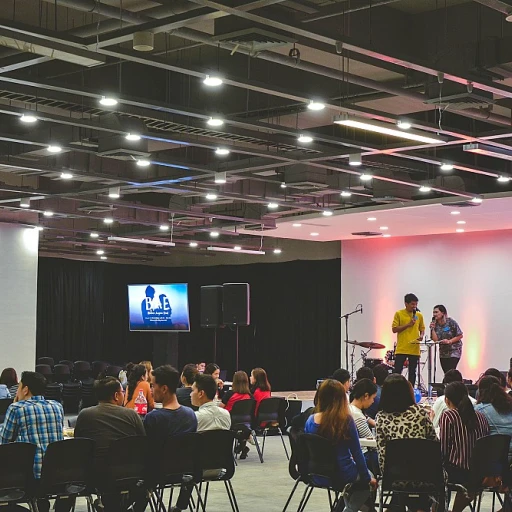
Understanding Change Management in Procurement
Grasping the Fundamentals of Change Management
In procurement, change management is not just a buzzword; it's an essential part of adapting to the dynamic market landscape. As organizations strive to enhance efficiency and compete on a global scale, they find themselves navigating a myriad of changes, from technological advancements to shifts in supplier relationships. Understanding the fundamentals of change management is crucial to guide procurement teams through these transformations effectively.
Change management in the context of procurement refers to the systematic approach to dealing with transitions in procurement processes. Whether it's implementing new procurement technologies or restructuring the supply chain, establishing an effective change management strategy helps mitigate resistance and ensures a smooth transition. This process is rooted in the principles of planning, communication, training, and support of people who are pivotal in these transformations.
One of the primary goals in procurement change management is to foster resilience among stakeholders. This involves recognizing the impact of changes on procurement functions and ensuring that everyone involved is prepared to adapt. Procurement teams are encouraged to become active participants in change processes, leveraging best practices and methodologies such as the ADKAR model, which focuses on awareness, desire, knowledge, ability, and reinforcement.
The journey of managing procurement change doesn’t end with understanding the basics. It is also about integrating strategies for effective upskilling and identifying key skills needed for procurement professionals, which will be explored in later sections. Additionally, overcoming challenges such as resistance to change is essential for achieving successful procurement transformations.
The Role of Upskilling in Procurement
The Integral Role of Upskilling
Upskilling has emerged as a pivotal strategy in navigating the complexities of procurement change. As procurement teams encounter new technologies and evolving supply chain demands, implementing effective upskilling initiatives becomes crucial. Enhancing the competency of procurement professionals not only aids in streamlining processes but also in addressing stakeholder expectations and overcoming resistance to change.
Procurement change often involves integrating new technologies that transform traditional procurement processes. To ensure a smooth transition, organizations must focus on equipping their teams with the necessary skills to manage these technologies. Upskilling provides a pathway to mitigate resistance change, fostering an environment where procurement teams feel confident in handling new tools and methodologies.
The benefits of upskilling extend beyond individual capabilities to encompass overall organizational advantages. By prioritizing training, companies can ensure their procurement function remains agile and responsive. Upskilling enhances supplier relationships, aids in achieving cost savings, and enables effective management procurement activities. This, in turn, supports the broader goals of procurement transformation, aligning with best practices in change management.
As organizations embark on this journey, exploring career opportunities and skills development in emerging areas like RPA and robotics becomes essential. Such investment in skill enhancement prepares professionals to effectively contribute to the change management initiatives within their procurement processes. Hence, the role of upskilling is not just about acquiring new skills—it's about ensuring procurement professionals are equipped to lead the change.
Identifying Key Skills for Procurement Professionals
Crucial Competencies for Procurement Excellence
Identifying the key skills for procurement professionals is vital for effective change management in procurement. While the procurement function has evolved significantly, professionals must continually update their skill set to keep up with changes. This evolution is often driven by technology, best procurement practices, and shifting procurement processes. Several critical areas necessitate focused attention:- Analytical Abilities: With data-driven decision-making at the forefront, procurers need strong analytical skills to assess supplier performance and cost savings effectively. Interpreting complex data forms the backbone of strategic procurement transformation.
- Technology Proficiencies: Understanding and leveraging procurement technologies are no longer optional. These tools facilitate procurement processes, streamline supply chain management, and enhance action plans for procurement change.
- Relationship Management: Building and sustaining supplier relationships is paramount. Procurement professionals must refine their communication skills to manage stakeholder expectations and overcome resistance to change.
- Adaptability: As resistance to change is a common obstacle, procurement teams must be flexible and adapt to evolving market demands and organizational transformations.
- Regular Training Programs: Continuous learning opportunities help keep pace with transformation and support an organization's adaptation to change.
- Peer Learning and Mentorship: Encouraging experienced professionals to mentor junior staff can effectively expedite the acquisition of key skills.
- External Certifications: Obtaining recognized certifications can provide invaluable insights into the latest trends and techniques in procurement management.
Strategies for Effective Upskilling
Implementing Targeted Training Programs
To drive effective change management in procurement, it's crucial to focus on targeted training programs. Identifying the areas of your procurement processes that require enhancement is the first step. Tailored training can address these needs directly, ensuring that your procurement teams are equipped to handle changes efficiently. It’s important to deliver training in a manner that aligns with your organization's specific challenges and needs.
Fostering a Culture of Continuous Learning
Building a culture that values continuous learning is essential to support the ongoing procurement transformation. Encourage procurement professionals to engage with the latest procurement technologies and to stay updated on industry best practices. Introducing regular forums or knowledge-sharing sessions can bolster this culture, helping to keep the entire organization invested in their development.
Leveraging Technology for Upskilling
Technology plays a significant role in modern procurement processes. Emphasizing digital skills is vital, especially as supply chains become more integrated and reliant on technology. Invest in platforms and tools that not only enhance supplier relationships but also empower procurement teams to track procurement changes and outcomes more effectively. This adoption of technology aids in reducing resistance to change by making processes simpler and more efficient.
Facilitating Cross-Functional Collaboration
Change management efforts, particularly in procurement, benefit from cross-functional collaboration. Processes often involve multiple stakeholders, making collaboration crucial for smooth transitions. Developing collaborative strategies helps in minimizing resistance to change as it involves various departments in the change process, reducing silos and fostering a unified approach to achieving the procurement function’s objectives.
Monitoring Progress and Assessing Impact
Once new skills have been introduced through upskilling efforts, it's essential to monitor progress diligently. Evaluate how well these skills integrate into existing processes and what cost savings or improvements in efficiency they deliver. Continual assessment ensures that training remains relevant and allows your organization to adapt quickly to any new challenges in the supply chain landscape.












